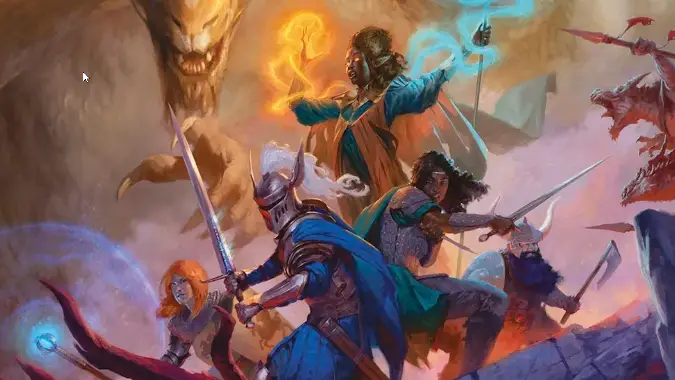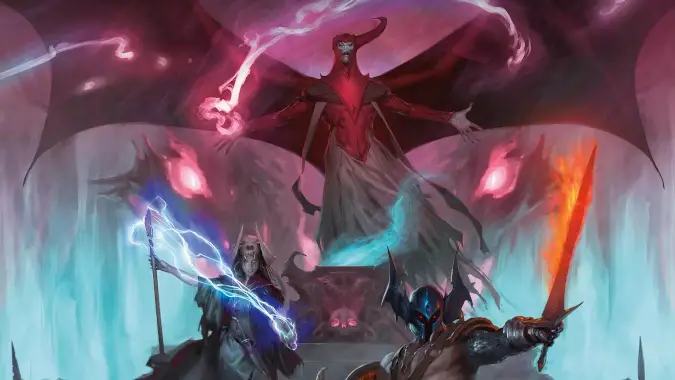What’s new in the D&D 2024 Player’s Handbook character creation process

With the upcoming official release of the Dungeons & Dragons 2024 Player’s Handbook, some of the game’s most basic rules and procedures are changing. While the new books will be backwards compatible with all of your 5th edition materials, you might be wondering if you really do need to purchase this new version. That really depends on how excited you are about the areas which have seen the most change (like class and subclass details) or entirely new features (like Weapon Mastery).
One of the things that will be markedly different than what was laid out in the 2014 version of the PHB is creating a character. Let’s take a look at that process, which parts are mostly unchanged, and what major differences you’ll see during your next session zero.

Character creation now starts with class
We start off differently right away — the first step in D&D 2024 character creation is not selecting a species (previously known as race), but choosing a class. The options are the same twelve classes that were found in the 5e PHB (sorry Artificers, you didn’t make the cut). Some of the new features come into play here. For example, I’ve always fancied myself a magic-user, but with the new Weapon Mastery effects I can’t wait to roll a Fighter and add a great number of additional effects to all my hacking and slashing.
Your choice of class still determines your hit dice and your proficiencies for armor, weapons, skills, and saving throws. Subclasses are gained at level 3 across the board instead of level 1, 2, or 3 depending on class. This should lessen occurrences of a player feeling behind the curve in the early part of an adventure because the rest of the party has gained amazing abilities from their subclass.
What’s your story?
The origin of your character is the next choice: this includes background, species, and languages. One of the major revamps for the 2024 ruleset is an increased emphasis on backgrounds. In 5e, your character had a background that gave them some skill proficiencies, languages, and starting equipment. In the 2024 edition, you also get a Feat as well as bonuses to your starting ability scores. The Origin Feats vary from hit point bonuses to initiative roll perks to learning spells. Each background lists three ability scores; you can add a point to all three, or add two point to one and one point to another (leaving the third unboosted).
Your choice of species comes next. This determines your character’s speed, size, and lifespan. Each species has special traits and abilities such as Darkvision, damage resistances, or additional skill proficiencies. One major change is that ability scores are no longer tied to species — these bonuses (such as Dwarves with high Constitution) have been moved over to be associated with background instead of species.

This change fully embraces the idea of playing whatever species/class combo your heart desires. No more stressing over a mandatory +2 Dexterity to a Halfling that you’re decided is a clumsy caster. Another update is the removal of half-species. Orcs (rather than Half-Orcs) are now a core species. If you’d like to play as a half-species it is still entirely possible — you choose one parent to give the size and speed, then use a mix of visual traits. New to 2024 are the addition of Aasimar and Goliaths to the core rules.
Which languages your character knows has also been decoupled from species. You now get to choose two (in addition to Common) as part of the character creation process. There are other sources of language knowledge that might come up with your class (Druids know Druidic) or background. But don’t expect to engage a town guard in a relaxed conversation in Draconic just because they’re a Dragonborn.
Roll the dice and hit the road
The final bit of character creation is largely unchanged. There are several different ways to determine your base ability scores, you can flesh out your character’s appearance and personality, and you finish by determining how evil and chaotic you’ll act by selecting an alignment. At this point you’ve either had a character name in mind for weeks, or you’ll spend twice the amount of time as the whole process up to this point brainstorming the perfect name.
The final details hearken back to the true origins of D&D as a tabletop pencil-and-paper role-playing game and what has given it 50 years of staying power: imagination. You don’t finish off your character sheet just by doing a few calculations based on your chosen ability scores. You bring your character to life: their backstory, what motivates them, what they hope to accomplish.
After that, all that’s left is adventuring. I really like a lot of the changes, I’m excited about some of the new features, and I’m really looking forward to rolling my first character within the new ruleset.
Please consider supporting our Patreon!
Join the Discussion
Blizzard Watch is a safe space for all readers. By leaving comments on this site you agree to follow our commenting and community guidelines.
 @Draygonia_42
@Draygonia_42



